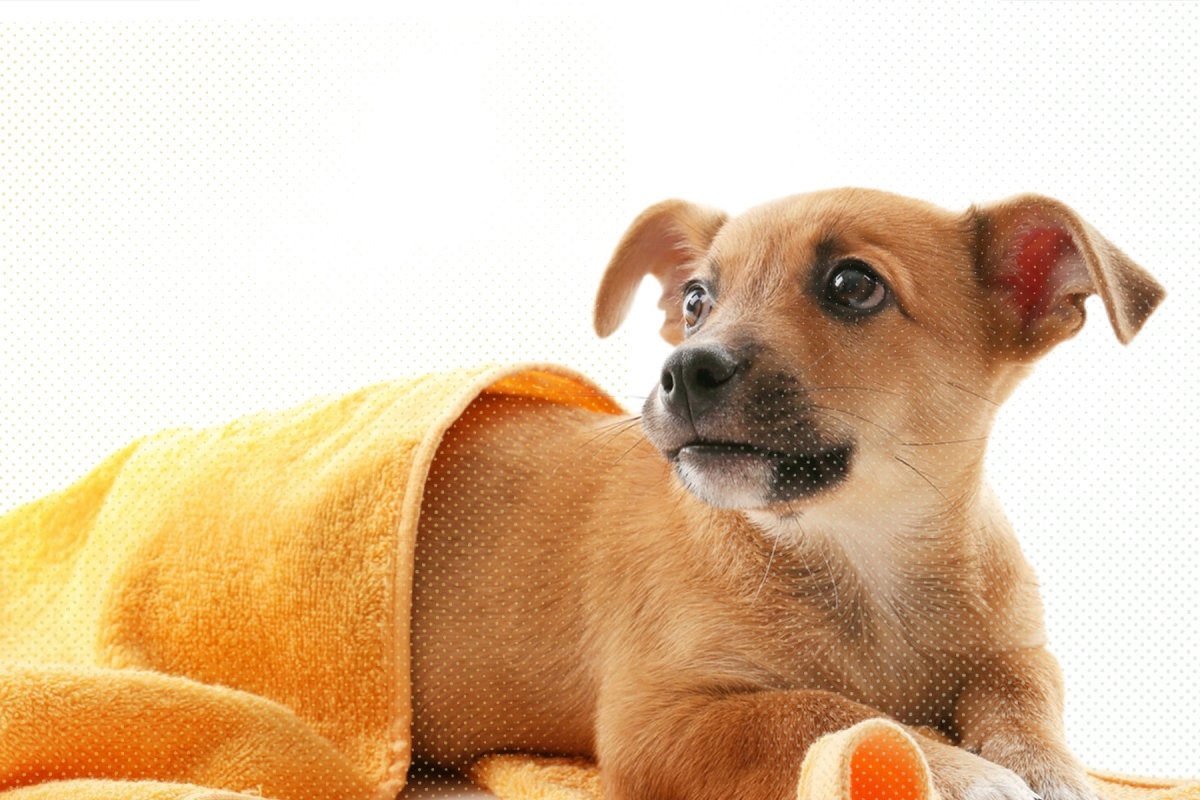It's finally time to get off the sofa and out into nature. The good weather invites you to go for long walks with your four-legged friend. But be careful - our vet Philipp Schledorn explains in an interview why you shouldn't overdo it with walks and what else you can do to keep your dog fit for the summer.
AniForte®: Walking in the great outdoors is always a good idea for dogs. Is there anything you can do wrong?
Vet: Yes and no, of course there is no such thing as bad weather for walking. Most pet owners don't like walking dogs in the snow and rain, but many dogs don't care about the weather. The "bad weather" or "dog weather" is therefore only a human perception. When it gets really warm again, however, you should make sure that you slowly increase the length of your walks. Dogs also build up their stamina and should not start a walk from 0 to 100.
AniForte®: Are there dogs that should not be taken for long walks or long bike rides?
Vet: Yes, older dogs suffering from osteoarthritis should generally not accompany us on long bike rides, especially not on asphalt surfaces. To support joint function naturally, supplements with collagen and green-lipped mussel, such as our AgilityVET tabs or green-lipped mussel capsules, can be useful. In this way, we can also enable our older pets to have an active and pain-free summer.
AniForte®: How can I tell if my dog has osteoarthritis?
Vet: In most cases, dog owners themselves notice that something has changed in their pet. For example, if the dog has difficulty standing up or lying down, which it never had before. You can recognize osteoarthritis in dogs by the fact that they lie down more often and are much more inactive when being walked. This means that they no longer run after every ball, no longer jump up and no longer run in front. Another symptom of osteoarthritis in dogs is a stiff gait after getting up or unusual strain on the legs. Some of our pets also start to become visibly lame. If the diagnosis is then confirmed by the vet, it is better to avoid long walks in future.
AniForte®: Does this also apply to dogs with other disabilities?
Vet: Dogs with heart disease, old and overweight dogs should be walked mainly in the early morning and later in the evening in milder temperatures. Brachycephalic (short-headed/round-headed) breeds such as Pugs, Bulldogs or Pekingese should also not be exercised during the warmer hours of the day if possible. Rather, it is advisable to create cool retreats for these animals in the home or garden.
AniForte®: What other risks for dogs with a lot of outdoor exercise are you aware of from your daily practice?
Vet: What I see time and again are minor injuries with awns, which are plant bodies with small barbs. In summer fields or green meadows, for example, these get caught in the toe paw area and cause inflammation. You should therefore check the area between your pet's toes as well as their nose and ears after every walk to detect the small unruly plant bodies. To be on the safe side, the ears can be wiped clean briefly with our ear cleaner dog after the walk.
Just yesterday I had to remove an awn from the upper airway of a sweet pug, his symptoms were unilateral nasal discharge and an increased nasal breathing noise - atypical even for a pug. If the awns are removed early enough, there is no cause for concern.
AniForte®: What can be done if an inflammation has formed due to the awn?
Vet: You can usually recognize an inflammation because the dog is lame or licks extremely in the area between the toes. You should then urgently have the affected area with the swelling cut open by the vet and have the lump removed. The same applies to all other parts of the body.
AniForte®: How do you recognize awns in your dog after a walk?
Vet: Awns in the dog's nose are often noticed by the conspicuous sneezing of the four-legged friend. It becomes dangerous if the awn moves into the lungs, where it can lead to aspiration. It is therefore important to act quickly. In the eye region, dogs scratch themselves in the case of awn infestation and watery to purulent discharge can be observed. If the ear region is affected, dogs shake conspicuously after being walked and scratch themselves excessively. Here too, a visit to the vet is highly recommended, as the four-legged friend can suffer permanent damage from the barbs of the awns.
AniForte®: What about parasite infestation in summer?
Vet: Fleas and ticks wake up in summer. Before you send your favorite four-legged friends out into the meadow, you should treat them with natural prophylactic products such as our Tick Shield or Spot On for dogs. These make an infestation less likely. You can also use tick repellent for dogs or protect your pet from fleas with a spray containing essential oils.
AniForte®: How can I check whether my four-legged friend is suffering from dog fleas?
Vet: The easiest way is with a flea comb. Stroke along the back line of your dog's back to detect any flea droppings. After combing, carefully shake out the flea comb into a cloth and examine it for small brown pebbles. If these are found, then unfortunately your four-legged friend has dog fleas. You should have these treated by a vet or veterinary practitioner as soon as possible, otherwise they can spread to humans and other animals.
AniForte®: What can happen if a flea infestation is left untreated?
Vet: Then so-called hot spots can form on the dog, i.e. localized weeping skin inflammations. Sometimes our four-legged friends also get them when playing in nettles or simply when running around due to small superficial injuries. I have already treated four dogs with hot spots today. These itchy and red skin irritations occur mainly in the head region of dogs with long and thick coats, for example Newfoundlands, retrievers and St. Bernards. As with parasite prophylaxis, regular checks of the coat from head to toe are always worthwhile.
AniForte®: What else should I look out for when I take my dog for a walk outside?
Vet: Many dogs like to drink from puddles and streams. In summer, the larvae and eggs of parasites live here. To prevent a parasite load, you can feed your dog with WermiX instead of carrying out costly aftercare later.
AniForte®: What tips would you give our dog owners for particularly hot days?
Vet: When the temperatures rise to extreme levels, you should avoid long walks on asphalt and tarred paths - just like us humans - and prefer forest paths instead. There are always cases of dogs suffering from heatstroke. This year I have already had to treat the first animals in my clinic. Therefore, never leave your dog alone in your car during the summer, even if it is only for a short time, for example to do your shopping. If I observe such a case in high temperatures, I call the police to protect the dog.
AniForte®: How can I tell if my dog is overheated or overworked when I walk him?
Vet: Dog owners quickly notice when their pet is overworked in high temperatures. The four-legged friends then have an increased breathing rate and breathe very hard into their stomach. Increased panting can also be observed. In these cases, make sure they cool down and take your dog out of the sun. If your pet is lying on its side or has a fever of over 39 degrees, you should urgently go to the vet. Dogs react to heat in a similar way to us and are just as excited to jump back into the lake or run across a meadow. Just make sure that your pet is in a good mood and behaves normally, then nothing stands in the way of outdoor exercise even on warm days.
AniForte®: Thank you very much for the interview.
Vet: Thank you for the invitation. I wish all dogs, owners and masters a wonderful summer.



